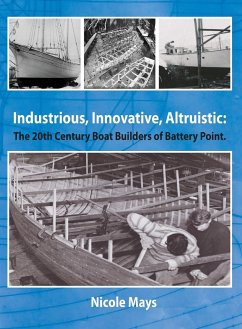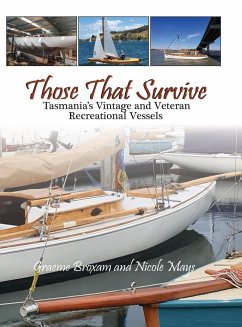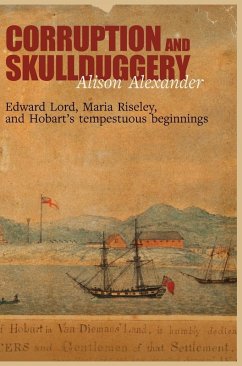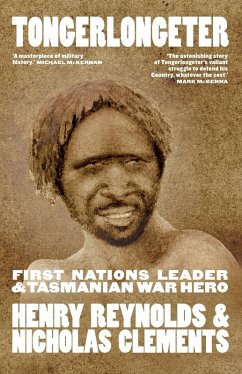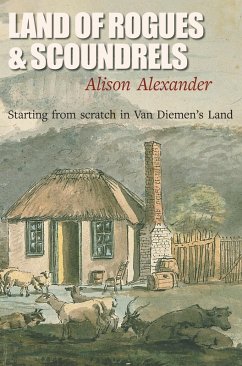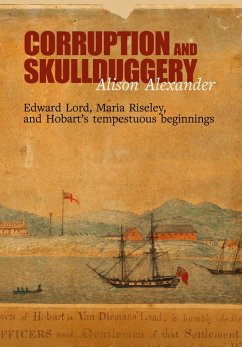
Spirited, Skilled and Determined
The Nineteenth Century Boat and Ship Builders of Battery Point
Versandkostenfrei!
Versandfertig in 1-2 Wochen
78,99 €
inkl. MwSt.

PAYBACK Punkte
39 °P sammeln!
During the nineteenth century upwards of 24 boat and ship builders operated commercial yards at Battery Point, near Hobart. The earliest of this cohort was Irish immigrant Daniel Callaghan who established a boat yard near the Mulgrave Battery in late 1830. It was operational for only a few years before Callaghan sailed to New South Wales in search of new opportunities. Next came two shipbuilders: Scottish immigrant William Williamson and English-born John Watson. The former established a yard in 1834 on the site previously occupied by Callaghan; the latter established a yard along the Napoleon...
During the nineteenth century upwards of 24 boat and ship builders operated commercial yards at Battery Point, near Hobart. The earliest of this cohort was Irish immigrant Daniel Callaghan who established a boat yard near the Mulgrave Battery in late 1830. It was operational for only a few years before Callaghan sailed to New South Wales in search of new opportunities. Next came two shipbuilders: Scottish immigrant William Williamson and English-born John Watson. The former established a yard in 1834 on the site previously occupied by Callaghan; the latter established a yard along the Napoleon Street corridor in 1839. Other boat and ship builders soon followed, including Peter and Henry Degraves, Joseph Risby and his brothers, Jacob Chandler, James Mackey, John Ross, Charles Miller, George Whitehouse, Lark Macquarie and Robert Inches. These men were all spirited, skilled and determined, successfully using endemic timbers and scant resources to create vessels they adapted to new and emerging trade patterns. Hundreds of Battery Point-built ketches, schooners, barques and brigs traversed local rivers and waterways, the unrelenting waters off Tasmania's coast, the perils of Bass Strait, and beyond. They were employed in local trade, in coastal trade, in intercolonial trade, as well as trade with New Zealand, Europe, Asia, and the Americas. Smaller craft, including whaleboats, lifeboats and dinghies, were constructed for use locally, as well as to supply visiting colonial and international vessels. A plethora of waterman's boats were built for use on the River Derwent for a growing pleasure and passenger trade. Racing craft were also constructed for use by local and visiting crews with often high stakes on offer. Of course there were setbacks, failures and disappointments, both professionally and personally, resulting in careers and personal lives that ebbed and flowed with the tide. Still, these men persevered. This book marks a significant revision to one published by the author in 2014 titled Spirited, Skilled and Determined: the Boat and Ship Builders of Battery Point (1835 - 1935) that is now out of print. In the decade since its publication, additional records have become available detailing the construction of many more vessels at Battery Point, as well as the existence of Battery Point's first commercial boat builder, Daniel Callaghan. As such, this edition now profiles over 24 builders, as well as more than 720 vessels built at this location during the nineteenth century; the latter an increase of over 170 from the previous volume. Updates have also been made to the history of many of the craft included in the first volume as more information has become available.



